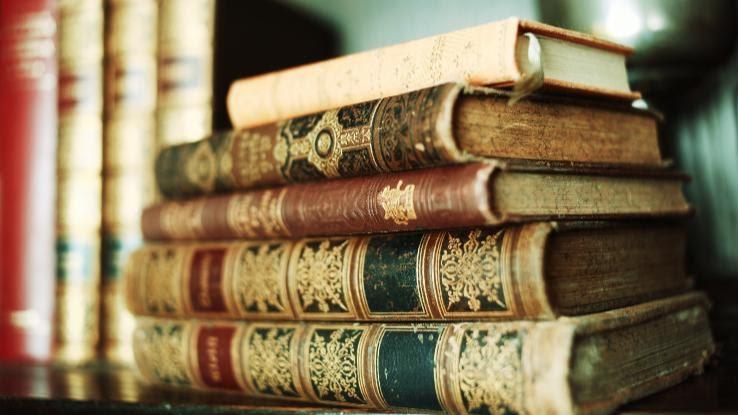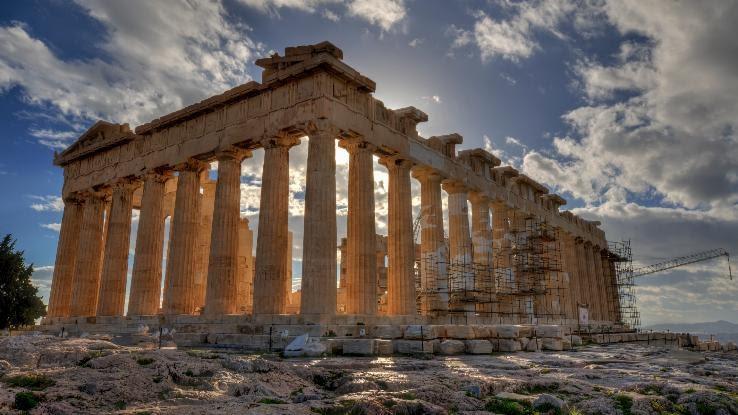What Is Classical Poetry?

If you’ve taken an English class it’s likely you’ve heard of classical poetry. But what exactly is this type of writing? There’s been a vast array of poems written throughout history, and poets across the world consistently release new works that add to our global library of poetry.
Because poetry has been present throughout so many eras of human history, it can be difficult to know where the cutoff mark is in the time frame that defines whether something is classical or modern. To answer these and related questions, we’re taking a look at classical poetry, its characteristics and several examples of classical poems throughout history.
What Is Classical Poetry?

The term “classical poetry” is commonly defined in two very different ways. Some people use the words “classical” or “classic” to refer to poetry that’s stood the test of time and is still considered great decades or centuries after the poems were first written.
Others use the term “classic poetry” to refer to poems written in a style called classicism. Classicism refers to ancient Greek and Roman poems that are widely considered to have achieved a level of excellence that’s rarely been replicated throughout history.
That said, the same definition is also used to describe more recent poems written in a style that attempts to mimic the style Greek and Roman poets used. This became a common aim of poetry around 780–900 CE and again in 17th- and 18th-century Europe.
Characteristics of Classical Poetry

Characteristics of classical poetry can be a bit confusing to define when the phrase is used to describe some of the best poems ever written. When used in this context, the phrase refers to beloved poems written in a wide range of different styles and from various cultures and time periods.
Nailing down a few features of classical poetry becomes a bit easier when the term is used to define poems written in the style referred to as “classicism.” As mentioned, this style originated in ancient Greece and Rome and tended to focus on the ideals, principles and concepts of Greco-Roman culture.
Classicism also tended to favor strict meter rather than free verse and balanced passion with reason and intelligent thought. The themes and ideas of classical poetry were usually very clear, even when tools such as wit, similes and metaphors were used. Unlike some modern poetry, there’s little room for a wide range of interpretation with classical poetry because the approach is more focused on reason than imagination.
Classical Poetry Examples

No matter which classical poetry definition you use, certain poets’ works fit the various parameters of the definition. Some of the original Greek and Roman poets and poems that people became keen on mimicking centuries later include:
- Homer: “The Illiad” and “The Odyssey“
- Hesiod: “Theogony“
- The Lyric Poems of Sappho
- Virgil: “The Aeneid“
- Ovid: “Metamorphoses“
As you’ll discover from reviewing the titles above, many of these dealt with the theological concepts, cultural foundations and ideals that helped bring about the Greco-Roman Golden Age. It can be challenging to fully appreciate the stylistic choices used in ancient poems because none of them were written in English. Luckily, the English Augustan poets of the 18th century modeled their own classical works on the same ancient styles. Some examples include:
- John Dryden: “Absalom and Achitophel“
- Alexander Pope: “The Rape of the Lock“
- Samuel Johnson: “The Vanity of Human Wishes“
- Thomas Gray: “Elegy Written in a Country Churchyard“
- Samuel Taylor Coleridge: “The Rime of the Ancient Mariner“
Classic American Poets

When it comes to discussions of classic American poets, few people attempt to identify poets who sought to recreate the traditional Greco-Roman style. However, in some cases similar styles did appear in the literature of the American Revolution when the United States was constructing its own ideals about freedom and patriotism. In this sense, Benjamin Franklin, Thomas Paine and Thomas Jefferson all produced works that invoked the ideas of classicism.
In broader terms, classical American poetry tends to refer to poems that seem to encapsulate the best poems ever produced in the United States, regardless of style. In this sense of “classical,” we look to poets like the following, whose bodies of work exemplify excellence in American poetry:
- Robert Frost
- Walt Whitman
- Emily Dickinson
- Edgar Allen Poe
- e e cummings
- T. S. Eliot
Other Types of Poetry Forms

While a solid definition of classical poetry can be hard to pinpoint, it can be helpful to compare it to other types of poetry forms. There have been numerous poetry movements throughout history, but these are a few of the more recent.
Romanticism
Romanticism was all the rage during the 18th and early 19th centuries when poets began turning back to emotion rather than the formal logic of the Enlightenment period. Authors like Byron, Keats and Shelley were all staples of the Romantic period in England, while poets like Edgar Allen Poe and Emily Dickinson embraced the movement on U.S. shores.
American Transcendentalists
America’s Transcendentalism movement began in 1836 when a group of intellectuals met for a discussion in New England. They ended up establishing a subculture founded on the ideals of utopian values, personal expression and spiritual exploration. Notable poets who were members included Louisa May Alcott, Henry David Thoreau and Ralph Waldo Emerson.
The Beat Movement
While relatively short, the Beat movement became one of the most popular in American history and lasted from around the late 1940s to the 1950s. The movement was fueled by the wanderlust of a few students from New York and San Francisco whose desire was to live life on their own terms. These ideas are reflected in the poetry of Beat writers like Jack Kerouac and Allen Ginsberg.
Is Poetry Considered Art or Literature?

Given the many different forms of poetry that have evolved, determining whether poetry is art or literature can be a question of great debate. The origins of the word “poetry” come from the ancient Greek ποιεω (poieo), which means “I create.”
According to Poetry.org, poetry originated as an artform before being considered literature and was frequently used as a means of passing down oral traditions in ancient societies. The organization also points out that the greater part of the world’s sacred scriptures consist of poetry, which makes sense given that poetry makes oral traditions easier to remember and pass down.
While it can’t be denied that poetry is considered a type of literature, its use of language tends to be far loftier and more artistic than the average piece of prose. Thus, it could be argued that poetry is a combination of both art and literature.





